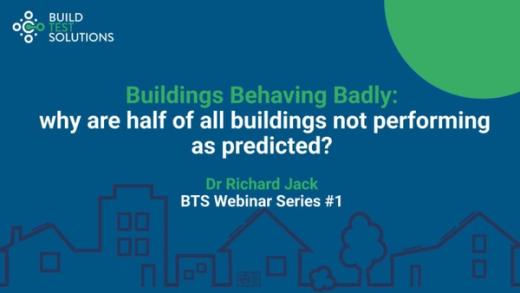Article
Proactive moisture management and Awaab's Law
With the implementation of Awaab's Law, the housing sector has entered a critical new phase. Named for two-year-old Awaab Ishak, who tragically died as a result of prolonged exposure to mould in his home, the law places clear, enforceable obligations on housing providers to tackle damp and mould issues as quickly as possible.
For too long, responses to mould problems have been reactive, triggered only when tenants complain or after health issues emerge. Awaab's Law changes that. It requires landlords to act proactively, although this can feel an intimidating expectation it’s also an opportunity to use new technologies like SmartHTC and the Mould Risk Indicator to deliver better homes for residents and more efficient works.
What Awaab's Law means for housing providers
Awaab's Law defines legally binding deadlines for landlords to investigate and address mould and damp in social housing. Non-compliance risks heavy fines and serious reputational damage. More importantly, it signals a cultural shift: landlords can no longer afford to wait. They must prevent problems, not just respond to them.
The key timelines are strict
The stringent deadlines that landlords must follow when dealing with mould and dampness are a crucial component of Awaab's Law:
These timelines leave little opportunity for delay. Housing providers need systems that spot problems before tenants raise concerns. This is where SmartHTC, and particularly the Mould Risk Indicator, comes in.
Presenting SmartHTC: A performance-building method based on science

Developed by Build Test Solutions, SmartHTC measures a property’s actual thermal performance by analysing indoor temperature, external weather, and heating use.
While its primary purpose is energy performance, the insights it generates are equally vital for understanding moisture risk. Properties with poor heat retention are typically more vulnerable to condensation and mould growth.
By deploying SmartHTC, housing providers can:
- Identify high-risk homes early.
- Target resources to the households most in need.
- Reduce wasted inspections and unnecessary interventions.
- Strengthen compliance with Awaab’s Law.
Early warning signs of moisture risk: The role of the Mould Risk Indicator
The Mould Risk Indicator is a potent addition to SmartHTC that offers an early warning system for possible mould growth. By monitoring internal conditions and taking into account building performance, it forecasts when and where mould is likely to grow – before visible signs appear. Housing providers can take proactive measures rather than waiting for tenants to complain about black spots on walls or health issues to manifest.
Moisture management is changed from a reactive crisis response to planned, preventative maintenance thanks to this predictive capability. For instance:
Creating a proactive culture: Transitioning from compliance to care
Awaab's Law should not just be seen as a compliance hurdle. It is an opportunity to raise housing standards, embed a culture of prevention, and safeguard tenants’ dignity and wellbeing.
The Mould Risk Indicator and SmartHTC empower landlords to:
- Continuously monitor their properties.
- Find problems before they become complaints.
- Make better use of resources.
- Preserve the residents' dignity and well-being.
In the end, this proactive strategy raises living standards throughout the housing stock while also guaranteeing adherence to new legal requirements.
Case in point:
Conclusion

There must never be another tragedy like the one that gave rise to Awaab's Law. Technology offers a path forward as housing providers adapt to these additional responsibilities. The evidence, knowledge, and vision required to transition from a reactive firefighting model to a proactive, preventative one are all enabled by introducing SmartHTC.
By embracing these tools, the housing sector can ensure safer, healthier homes while fulfilling both the letter and the spirit of Awaab’s Law.




